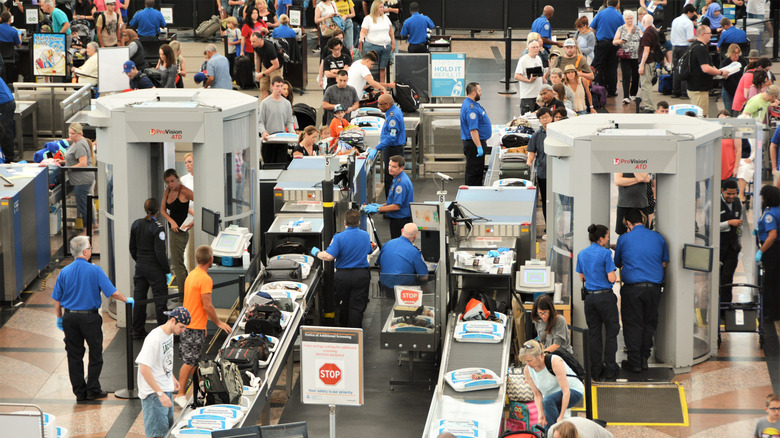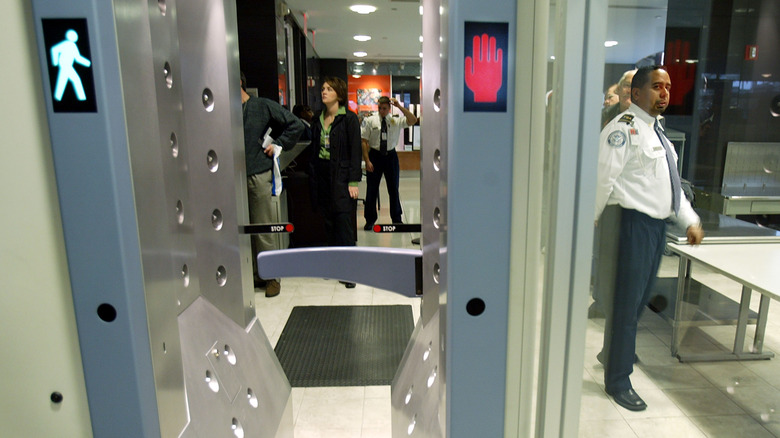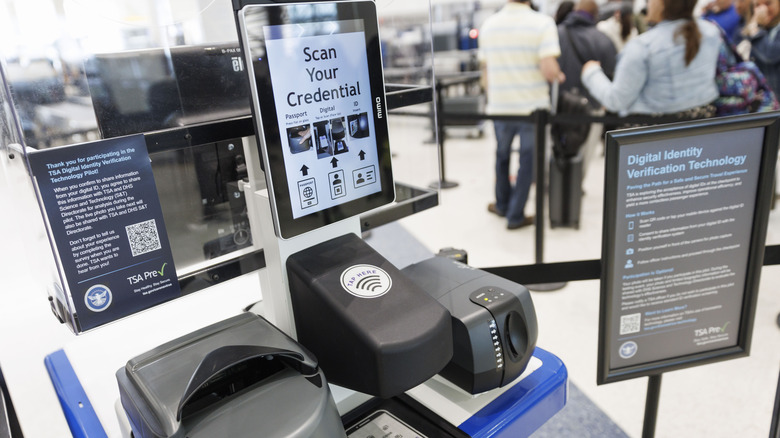The TSA Security Checkpoint Is About To Get Even More Efficient At This Major Airport Hub
While there's no doubt that travel is relaxing and fun, it's not uncommon to dread the process of going through security for the Transportation Security Administration (TSA). With the record number of post-pandemic travelers, officials are looking for new ways to reduce wait times and iron out the process, like introducing facial recognition and self-service checkpoints at select airports.
Starting in January 2024, the Harry Reid International Airport in Las Vegas, Nevada will have a self-service screening program. This will allow passengers to go through security with minimal assistance from TSA agents, not unlike the self-checkout services at Taco Bell, Safeway, and CVS. The initiative is part of the Screening At Speed program, which aims to tighten security while improving wait time for passengers. In addition, the self-service checkpoints will reduce the number of pat downs and bag checks from TSA agents, notes the program manager John Fortune in a press release issued by the Department of Homeland Security.
How the self-service checkpoints work
The Department of Homeland Security is testing out different prototypes from three companies, all of which look sleek and futuristic in the artist renderings. The machines at Harry Reid International Airport are called PAX MX2 by a firm called Vanderlande.
Members enrolled with TSA PreCheck will have access to this new technology first. When you get to a security station, you'll place your bag on a conveyor belt. There will be instructions for what to do next on a video monitor. After you enter the screening portal, the entry and exit doors will lock. If you accidentally leave something in your pockets, like keys, you'll still be able to open the entry door to put them aside. Once the security screening is over, the exit door will open and away you'll go. If you need help from a TSA agent at any time, there will be a help button available on the monitor.
Before the PAX MX2 was installed at the Harry Reid International Airport, it was first tested at the Ronald Reagan Washington National Airport in Washington, D.C. back in March of this year. After a successful first stage, it's ready to be rolled out to the masses.
Ongoing technological development
The PAX MX2 isn't the only high-tech project in the works. Another company called Voxel Radar is developing in-motion panel sensors, which are designed to screen passengers in real time while they're moving through the security line. This technology could stand on its own or be incorporated into the new security models.
Another company called Micro-X is working on a pod-based design with self-service checkpoints, which will include a small X-ray system for checking carry-on bags and personal items. If you want to test it out for yourself, you can do a virtual reality walkthrough at the Consumer Electronics Show in Las Vegas in January 2024. The pods are currently being built and testing is slated for 2025. If all goes to plan, the company will install several pods into one security lane, maximizing space and accommodating multiple people at once. Soon, it seems, complaining about TSA hassle and long lines will be a thing of the past.


